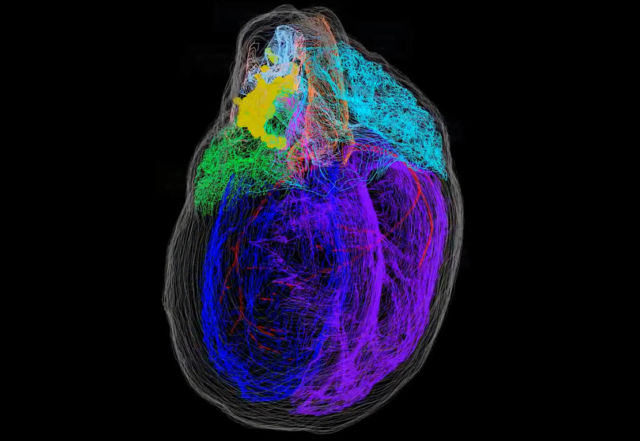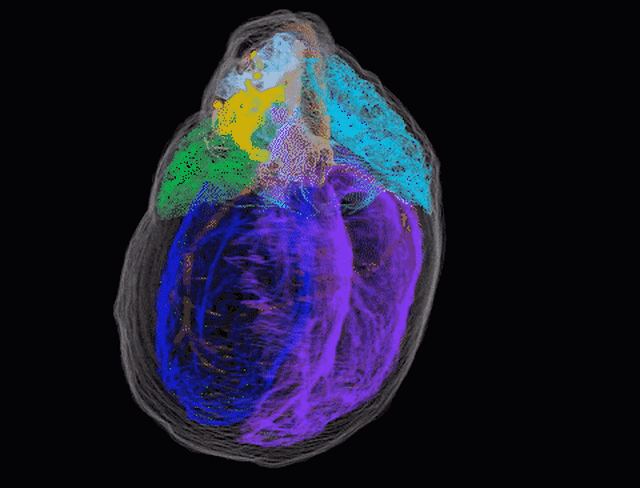Scientists created the first 3D map of the neurons in the heart, revealing foundational insight into their role in heart attacks and other cardiac conditions.
The normal functioning of our hearts is maintained by our body’s control center – the brain – via an intricate network of nerves. When this communication is disrupted, it results in heart disease, including heart attacks, sudden cardiac death and problems in blood supply.
As an added layer of safety, the heart has its own ‘little brain’, called the intracardiac nervous system (ICN) to monitor and correct any local disturbances in communication. The ICN is essential in supporting heart health and can even protect cardiac muscle during a heart attack. But it’s not clear how exactly the ICN carries out these roles, because the organization of the neurons that make up the ICN are poorly understood; we don’t know where they are located in the heart, how they are connected to each other, and what their molecular properties are.
In a groundbreaking study published in iScience on May 26th, researchers at Thomas Jefferson University and their collaborators have been able to answer these questions in unprecedented detail.
 The 3D reconstructed male rat heart, showing the distribution of the heart’s neurons in yellow. Credit Thomas Jefferson University
The 3D reconstructed male rat heart, showing the distribution of the heart’s neurons in yellow. Credit Thomas Jefferson University
“The ICN represents a big void in our understanding that falls between neurology and cardiology,” says co-senior author James Schwaber, PhD, director of the Daniel Baugh Institute for Functional Genomics and Computational Biology (DBI) and co-senior author of the study. “Our goal was to bridge that gap by providing an anatomical framework of the ICN and a foundation to understand its role in heart health.”
“The only other organ for which such a detailed high-resolution 3D map exists is the brain,” says co-senior author Raj Vadigepalli, PhD, Professor of Pathology, Cell Biology and Anatomy. “In effect what we have created is the first comprehensive roadmap of the heart’s nervous system that can be referenced by other researchers for a range of questions about the function, physiology, and connectivity of different neurons in the ICN.”
source Thomas Jefferson University






Leave A Comment